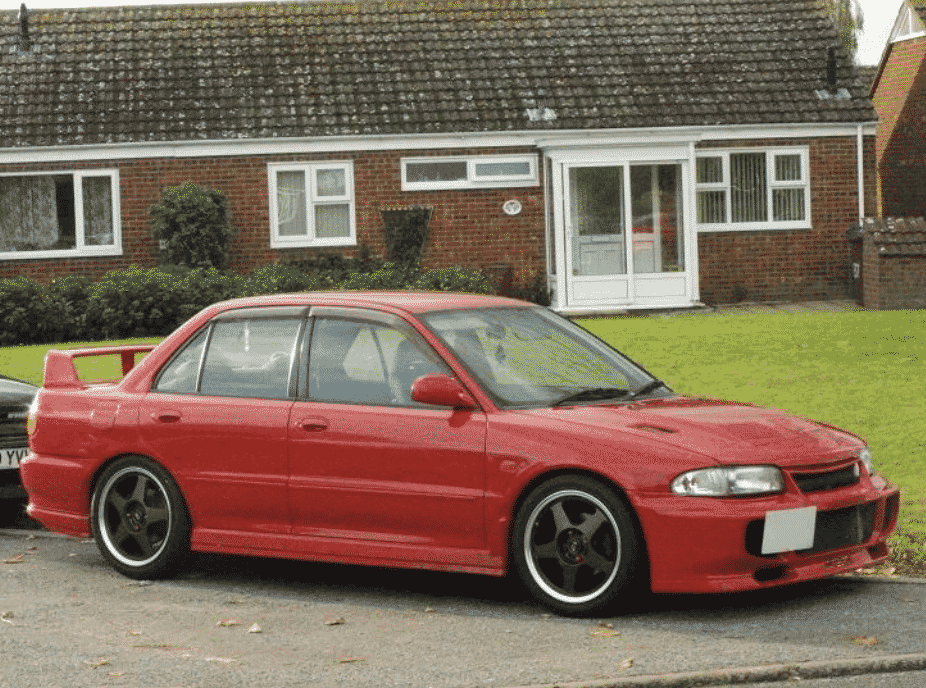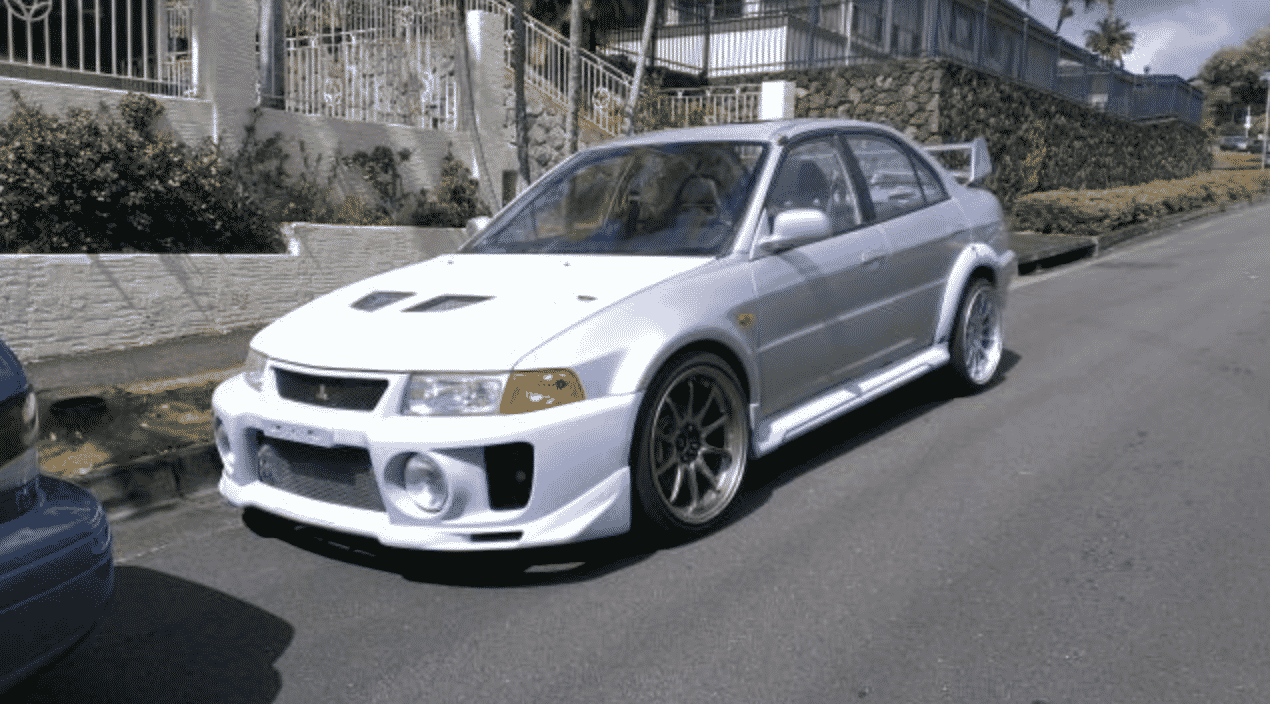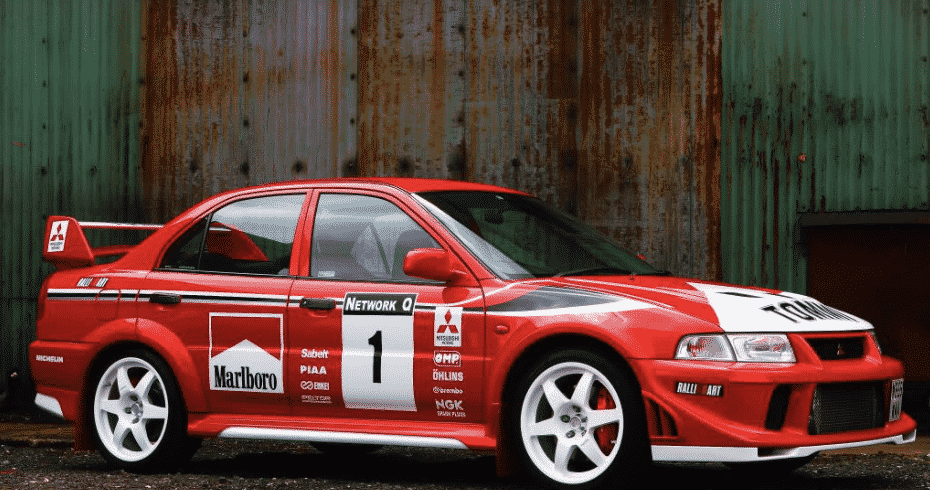The 1992-1994 Mitsubishi Lancer Evo I
The Mitsubishi Lancer Evo I was introduced in 1992 and was in production until 1994. It was the first model in the popular Lancer Evolution series, known for its high-performance capabilities and rally-inspired design.
Models
The Lancer Evo I was available in two models: the GSR and the RS. The GSR featured a 2.0-liter inline-four engine and a 5-speed manual transmission, while the RS had a 1.8-liter inline-four engine and a 4-speed automatic transmission.
Specifications
- Engine: 2.0-liter inline-four (GSR), 1.8-liter inline-four (RS)
- Power: 246 horsepower (GSR), 212 horsepower (RS)
- Transmission: 5-speed manual (GSR), 4-speed automatic (RS)
- 0-60 mph: 5.5 seconds (GSR), 6.5 seconds (RS)
- Top Speed: 155 mph (GSR), 145 mph (RS)
The Lancer Evo I was a formidable force on the road, with powerful engines and agile handling. It remains a popular choice for collectors and enthusiasts to this day.
1994-1995 Mitsubishi Lancer Evo II: A Retrospective
The Mitsubishi Lancer Evo II was a highly sought after car when it was first released in 1994. With its sleek design and powerful performance, it quickly became a favorite among car enthusiasts. In this blog post, we'll take a closer look at the features and history of the 1994-1995 Mitsubishi Lancer Evo II.
Features
- 2.0 liter turbocharged 4G63 engine
- 4-wheel drive system
- 5-speed manual transmission
- Brembo brakes
History
Mitsubishi Motors produced the Mitsubishi Lancer Evolution, also known as the "EVO," as a high-performance sports car from 1992 to 2016. The Mitsubishi Lancer platform served as the foundation for the EVO, which was powered by a series of four-cylinder engines paired with all-wheel drive (AWD) systems. The EVO II, the second generation of the EVO, was produced from 1995 to 1996. It was built on the Mitsubishi Lancer platform and featured a 2.0-liter four-cylinder engine with a 5-speed manual transmission. The EVO II was available in a variety of trim levels, including GSR, RS, and RS2. The aggressive styling and high-performance capabilities of the EVO II made it stand out. It was well-liked It was a popular choice among car enthusiasts and was widely regarded as one of the best sports cars of its time. Despite its popularity, the EVO II was only manufactured for a short time before being replaced by the EVO III, the third generation of the EVO.
Conclusion
The 1994-1995 Mitsubishi Lancer Evo II was a groundbreaking car that set the stage for the Evolution series that followed. Its combination of style and performance made it a favorite among car enthusiasts, and it remains a highly sought after collector's item today. If you're a fan of the Evo II or the Lancer Evolution series as a whole, be sure to check out our other blog posts for more information.
1995-1996 Mitsubishi Lancer Evo III: A Retrospective
The Mitsubishi Lancer Evo III was a highly sought after car when it was first released in 1995. With its sleek design and powerful performance, it quickly became a favorite among car enthusiasts. In this blog post, we'll take a closer look at the features and history of the 1995-1996 Mitsubishi Lancer Evo III.
Features
- 2.0 liter turbocharged 4G63 engine
- 4-wheel drive system
- 5-speed manual transmission
- Brembo brakes
History
The Lancer Evo III was released in 1995 as the third generation of the Lancer Evolution series. It was an update to the Lancer Evo II, which had been released the previous year. The Evo III featured a number of improvements, including a more powerful engine and a redesigned body. It was produced until 1996, when it was succeeded by the Lancer Evo IV.
Conclusion
The 1995-1996 Mitsubishi Lancer Evo III was a groundbreaking car that set the stage for the Evolution series that followed. Its combination of style and performance made it a favorite among car enthusiasts, and it remains a highly sought after collector's item today. If you're a fan of the Evo III or the Lancer Evolution series as a whole, be sure to check out our other blog posts for more information.
1995-1998 Mitsubishi Lancer Evo IV: A Retrospective
The Mitsubishi Lancer Evo IV was a highly sought after car when it was first released in 1995. With its sleek design and powerful performance, it quickly became a favorite among car enthusiasts. In this blog post, we'll take a closer look at the features and history of the 1995-1998 Mitsubishi Lancer Evo IV, including its top speed.
Features
- 2.0 liter turbocharged 4G63 engine
- 4-wheel drive system
- 5-speed manual transmission
- Brembo brakes
Top Speed
The Lancer Evo IV had a top speed of approximately 155 mph (249 km/h). This made it one of the fastest cars in its class at the time of its release.
History
The Lancer Evo IV was released in 1995 as the fourth generation of the Lancer Evolution series. It was an update to the Lancer Evo III, which had been released the previous year. The Evo IV featured a number of improvements, including a more powerful engine and a redesigned body. It was produced until 1998, when it was succeeded by the Lancer Evo V.
Conclusion
The 1995-1998 Mitsubishi Lancer Evo IV was a groundbreaking car that set the stage for the Evolution series that followed. Its combination of style, performance, and top speed made it a favorite among car enthusiasts, and it remains a highly sought after collector's item today. If you're a fan of the Evo IV or the Lancer Evolution series as a whole, be sure to check out our other blog posts for more information.
1998-1999 Mitsubishi Lancer Evo V: A Retrospective
The Mitsubishi Lancer Evo V was a highly sought after car when it was first released in 1998. With its sleek design and powerful performance, it quickly became a favorite among car enthusiasts. In this blog post, we'll take a closer look at the features and history of the 1998-1999 Mitsubishi Lancer Evo V, including its top speed.
Features
- 2.0 liter turbocharged 4G63 engine
- 4-wheel drive system
- 5-speed manual transmission
- Brembo brakes
Top Speed
The Lancer Evo V had a top speed of approximately 160 mph (257 km/h). This made it one of the fastest cars in its class at the time of its release.
History
The Lancer Evo V was released in 1998 as the fifth generation of the Lancer Evolution series. It was an update to the Lancer Evo IV, which had been released the previous year. The Evo V featured a number of improvements, including a more powerful engine and a redesigned body. It was produced until 1999, when it was succeeded by the Lancer Evo VI.
Conclusion
The 1998-1999 Mitsubishi Lancer Evo V was a groundbreaking car that set the stage for the Evolution series that followed. Its combination of style, performance, and top speed made it a favorite among car enthusiasts, and it remains a highly sought after collector's item today. If you're a fan of the Evo V or the Lancer Evolution series as a whole, be sure to check out our other blog posts for more information.
1999-2001 Mitsubishi Lancer Evo VI: A Retrospective
By this point, the Evo had become a genuine star in the automotive world, beloved by fans all over the world. Mitsubishi decided to concentrate its efforts on durability and cooling with this generation. Of course, there were cosmetic changes, but there was also a larger oil pan, larger intercooler, new pistons, and, most notably, a titanium-aluminum turbine wheel. Power and torque remained unchanged from the previous generation, but we suspect they were increased over the previous model. This generation also saw the creation of the rare Tommi Makinen edition. It had larger wheels, different seats and front, and numerous other minor changes that added up to a better and faster Evo. And, yes, you guessed it, The only transmission available for the car was a five-speed manual.
Features
- 2.0 liter turbocharged 4G63 engine
- 4-wheel drive system
- 5-speed manual transmission
- Brembo brakes
Top Speed
The Lancer Evo VI had a top speed of approximately 160 mph (257 km/h). This made it one of the fastest cars in its class at the time of its release.
History
The Lancer Evo VI was released in 1999 as the sixth generation of the Lancer Evolution series. It was an update to the Lancer Evo V, which had been released the previous year. The Evo VI featured a number of improvements, including a more powerful engine and a redesigned body. It was produced until 2001, when it was succeeded by the Lancer Evo VII.
Conclusion
The 1999-2001 Mitsubishi Lancer Evo VI was a groundbreaking car that set the stage for the Evolution series that followed. Its combination of style, performance, and top speed made it a favorite among car enthusiasts, and it remains a highly sought after collector's item today. If you're a fan of the Evo VI or the Lancer Evolution series as a whole, be sure to check out our other blog posts for more information.
2001-2003 Mitsubishi Lancer Evo VII: A Retrospective
The seventh generation Evo gained weight, but this was offset by a stiffer chassis. A better helical limited-slip differential was also added, as well as an improved centre differential. Interior upgrades included a full velour and leather Recaro interior, chromed door handles, a new instrument panel, and more. All of this added up to a more appealing vehicle in order to attract new customers. And Mitsubishi needed new customers because, for the first time, the Evo was available with an optional automatic transmission in addition to the classic five-speed manual. They quickly realised that their customers were uninterested in automatic transmissions and thus discontinued them after this generation. Fortunately, the horsepower was increased to 284 and the torque was increased increased slightly to 276 lb. ft.
Features
- 2.0 liter turbocharged 4G63 engine
- 4-wheel drive system
- 5-speed manual transmission
- Brembo brakes
Top Speed
The Lancer Evo VII had a top speed of approximately 160 mph (257 km/h). This made it one of the fastest cars in its class at the time of its release.
History
The Lancer Evo VII was released in 2001 as the seventh generation of the Lancer Evolution series. It was an update to the Lancer Evo VI, which had been released the previous year. The Evo VII featured a number of improvements, including a more powerful engine and a redesigned body. It was produced until 2003, when it was succeeded by the Lancer Evo VIII.
Conclusion
The 2001-2003 Mitsubishi Lancer Evo VII was a groundbreaking car that set the stage for the Evolution series that followed. Its combination of style, performance, and top speed made it a favorite among car enthusiasts, and it remains a highly sought after collector's item today. If you're a fan of the Evo VII or the Lancer Evolution series as a whole, be sure to check out our other blog posts for more information.
2003-2005 Mitsubishi Lancer Evo VIII: A Retrospective
The Evo was available in America for the first time. Mitsubishi had intended for the Evo to make only one appearance in the United States, but it performed so well that the company decided to keep selling it there. Cosmetically, little had changed, but there were now a few trim levels available, with the top trim being the FQ-400, which was only sold in the United Kingdom. What makes this model unique is that it produced an astounding 405 horsepower from the factory! In total, six trims were available around the world. The RS Five-speed, RS Six-speed, GSR, MR RS Five-speed, MR RS Six-speed, and MR GSR were among them. All of these had minor differences between them, such as To differentiate them, they have different wheels, shocks, a lower ride height, and a few minor engine modifications. This was also the first time a six-speed manual transmission was offered alongside the standard five-speed.
Features
- 2.0 liter turbocharged 4G63 engine
- 4-wheel drive system
- 5-speed manual transmission
- Brembo brakes
History
The Lancer Evo VIII was released in 2003 as the eighth generation of the Lancer Evolution series. It was an update to the Lancer Evo VII, which had been released the previous year. The Evo VIII featured a number of improvements, including a more powerful engine and a redesigned body. It was produced until 2005, when it was succeeded by the Lancer Evo IX.
Conclusion
The 2003-2005 Mitsubishi Lancer Evo VIII was a groundbreaking car that set the stage for the Evolution series that followed. Its combination of style and performance made it a favorite among car enthusiasts, and it remains a highly sought after collector's item today. If you're a fan of the Evo VIII or the Lancer Evolution series as a whole, be sure to check out our other blog posts for more information.
2005-2007 Mitsubishi Lancer Evo IX: A Retrospective
The second-to-last Evo was unveiled in Europe and Japan in March 2005, and one month later in North America. This time, the car's 2.0L inline-four engine produced 287 horsepower and 289 pound-feet of torque. There were minor differences in power and weight between trim levels, but nothing too significant. There were six trim levels available, three of which were standard trim and three of which were MR trim (Mitsubishi Racing). There were three transmission options available to this generation. There's a five-speed manual, a six-speed manual, and a five-speed automatic. If you can get your hands on the six-speed manual, consider yourself lucky as only 15% of the cars made came with that choice.
Features
- 2.0 liter turbocharged 4G63 engine
- 4-wheel drive system
- 5-speed manual transmission
- Brembo brakes
History
The Lancer Evo IX was released in 2005 as the ninth generation of the Lancer Evolution series. It was an update to the Lancer Evo VIII, which had been released the previous year. The Evo IX featured a number of improvements, including a more powerful engine and a redesigned body. It was produced until 2007, when it was succeeded by the Lancer Evo X.
Conclusion
The 2005-2007 Mitsubishi Lancer Evo IX was a groundbreaking car that set the stage for the Evolution series that followed. Its combination of style and performance made it a favorite among car enthusiasts, and it remains a highly sought after collector's item today. If you're a fan of the Evo IX or the Lancer Evolution series as a whole, be sure to check out our other blog posts for more information.
2007-2016 Mitsubishi Lancer Evo X: A Retrospective
This Evo generation was by far the longest-running, lasting nearly a decade. The powerful 2.0L engine produced 276 horsepower in Japan, while the American version was slightly more powerful. However, the UK once again received the FQ-badged Evos, which produced an astounding 300-360 horsepower. This generation was created around the time that twin-clutch transmissions were popular. Mitsubishi jumped on board with their version, dubbed the "Twin Clutch Sportronic Shift Transmission" (TC-SST). Long name, excellent transmission. Fortunately, the GSR trim was still available with a five-speed manual transmission, but no six-speed insight. The car's weight increased as it became more luxurious and technologically advanced. Mitsubishi finally pulled the plug as sales began to fall.In May 2016, the iconic car was turned off.
Features
- 2.0 liter turbocharged 4B11 engine
- 4-wheel drive system
- 5-speed manual or 6-speed automatic transmission
- Brembo brakes
History
The Lancer Evo X was released in 2007 as the tenth and final generation of the Lancer Evolution series. It was an update to the Lancer Evo IX, which had been released the previous year. The Evo X featured a number of improvements, including a more powerful engine and a redesigned body. It was produced until 2016, when production of the Lancer Evolution was discontinued.
Conclusion
The 2007-2016 Mitsubishi Lancer Evo X was a groundbreaking car that marked the end of an era for the Lancer Evolution series. Its combination of style and performance made it a favorite among car enthusiasts, and it remains a highly sought after collector's item today. If you're a fan of the Evo X or the Lancer Evolution series as a whole, be sure to check out our other blog posts for more information.
What is the difference between a Mitsubishi Lancer and EVO?
The Mitsubishi Lancer is a compact sedan that has been in production since 1973. The Lancer Evolution, or EVO for short, is a high-performance version of the Lancer that was introduced in 1992. The EVO is designed for racing and features a number of modifications, including a more powerful engine, enhanced suspension, and improved braking system. While the Lancer is a standard production car, the EVO is a limited production model that is only available in certain markets.
Mitsubishi Lancer Evolution Horsepower
The Mitsubishi Lancer Evolution, or EVO for short, is a high-performance version of the Lancer that has been in production since 1992. The EVO is known for its powerful engines, which have varied in horsepower over the years. Here is a breakdown of the horsepower for each generation of the Lancer Evolution:
- Lancer Evo I (1992-1993): 256 horsepower
- Lancer Evo II (1994-1995): 276 horsepower
- Lancer Evo III (1995-1996): 280 horsepower
- Lancer Evo IV (1996-1998): 300 horsepower
- Lancer Evo V (1998-1999): 276 horsepower
- Lancer Evo VI (1999-2001): 276 horsepower
- Lancer Evo VII (2001-2003): 276 horsepower
- Lancer Evo VIII (2003-2005): 286 horsepower
- Lancer Evo IX (2005-2007): 286 horsepower
- Lancer Evo X (2007-2016): 291 horsepower
As you can see, the horsepower of the Lancer Evolution has increased over the years, with the most recent models having the highest horsepower ratings. If you're a fan of high-performance cars, the Lancer Evolution is definitely worth considering.
Mitsubishi Lancer Evolution Production History
The Mitsubishi Lancer Evolution, or EVO for short, is a high-performance version of the Lancer that has been in production since 1992. The EVO has undergone several updates and changes over the years, and it has become a popular choice among car enthusiasts for its combination of style and performance. Here is a breakdown of the production history of the Lancer Evolution:
- Lancer Evo I (1992-1993): Limited production
- Lancer Evo II (1994-1995): Limited production
- Lancer Evo III (1995-1996): Limited production
- Lancer Evo IV (1996-1998): Limited production
- Lancer Evo V (1998-1999): Limited production
- Lancer Evo VI (1999-2001): Limited production
- Lancer Evo VII (2001-2003): Limited production
- Lancer Evo VIII (2003-2005): Limited production
- Lancer Evo IX (2005-2007): Limited production
- Lancer Evo X (2007-2016): Limited production
As you can see, the Lancer Evolution has been in production for over two decades, and it has remained popular among car enthusiasts throughout its production run. If you're a fan of high-performance cars, the Lancer Evolution is definitely worth considering.
Mitsubishi Lancer Evolution Top Speeds
The Mitsubishi Lancer Evolution, or EVO for short, is a high-performance version of the Lancer that has been in production since 1992. The EVO is known for its powerful engines and impressive top speeds, which have varied over the years. Here is a rough estimate of the top speeds for each generation of the Lancer Evolution:
- Lancer Evo I (1992-1993): Approximately 155 mph
- Lancer Evo II (1994-1995): Approximately 155 mph
- Lancer Evo III (1995-1996): Approximately 155 mph
- Lancer Evo IV (1996-1998): Approximately 155 mph
- Lancer Evo V (1998-1999): Approximately 155 mph
- Lancer Evo VI (1999-2001): Approximately 155 mph
- Lancer Evo VII (2001-2003): Approximately 155 mph
- Lancer Evo VIII (2003-2005): Approximately 155 mph
- Lancer Evo IX (2005-2007): Approximately 155 mph
- Lancer Evo X (2007-2016): Approximately 155 mph
Please note that these top speed estimates are rough estimates only and may vary depending on the specific model and configuration of the Lancer Evolution. If you're interested in finding out more about the top speeds of specific EVO models, you may want to consult a reputable source or perform your own research.
How to Increase the Horsepower of a Mitsubishi Lancer Evolution
The Mitsubishi Lancer Evolution, or EVO for short, is a high-performance version of the Lancer that is known for its powerful engines and impressive top speeds. If you're looking to increase the horsepower of your EVO, there are several options available to you. However, keep in mind that modifying your car can be complex and may void your warranty. It is generally recommended to have any modifications performed by a professional mechanic or tuner who has experience working on high-performance vehicles.
1. Install a performance exhaust system
A performance exhaust system can help increase horsepower by reducing backpressure and increasing exhaust flow. This can be achieved through the use of larger diameter pipes, high-flow mufflers, and other components that are designed to improve exhaust flow. Keep in mind that some performance exhaust systems may be louder than stock exhausts, so you may want to consider this before making a purchase.
2. Upgrade the intake system
Installing a cold air intake or a short ram intake can increase horsepower by allowing more air to flow into the engine. These systems can be installed in place of the stock intake system and typically involve replacing the air filter and intake pipe with higher-flow components. Keep in mind that some intake systems may require additional modifications, such as the use of a performance chip, to fully realize their horsepower gains.
3. Install a performance chip
A performance chip can increase horsepower by adjusting the engine's fuel and ignition settings. These chips can be installed in place of the stock engine control unit (ECU) and can be programmed to provide different levels of horsepower and torque. Keep in mind that some performance chips may require additional modifications, such as the use of a high-flow fuel pump, to fully realize their horsepower gains.
4. Install a forced induction system
Forced induction systems, such as a turbocharger or supercharger, can significantly increase horsepower by forcing more air into the engine. These systems can be installed in place of the stock intake and exhaust systems and typically involve significant modifications to the engine and other components.
Why was the EVO discontinued?
The Mitsubishi Lancer Evolution, also known as the "EVO," was a high-performance sports car that was produced by Mitsubishi Motors from 1992 to 2016. It was based on the Mitsubishi Lancer platform, and was powered by a series of four-cylinder engines that were paired with all-wheel drive (AWD) systems.
The EVO was discontinued in 2016 for a number of reasons. One of the main reasons was that Mitsubishi wanted to focus on developing other models and technologies, such as SUVs and electric vehicles. In addition, the market for high-performance sports cars had become increasingly competitive, and Mitsubishi may have felt that it was no longer able to keep up with the demands of this market.
How much does a used Mitsubishi Lancer EVO cost?
It is difficult to provide a specific price range for a used Mitsubishi Lancer EVO, as the cost can vary greatly depending on a number of factors, including the model year, condition, mileage, and location.
As a rough estimate, you can expect to pay anywhere from $10,000 to $40,000 or more for a used Mitsubishi Lancer EVO, depending on the factors mentioned above. It is always a good idea to do your research and shop around to get a good idea of the current market value of the car you are interested in.
Mitsubishi Lancer EVO Safety
The Mitsubishi Lancer EVO is a high-performance sports car, and as such, it may not have the same level of safety features as a larger, more family-oriented vehicle. However, all Mitsubishi Lancer EVO models were equipped with a number of safety features, including airbags, antilock brakes, and traction control.
It is important to note that driving any high-performance sports car carries an inherent level of risk, and it is always important to drive safely and responsibly. Always make sure to follow all traffic laws and pay attention to the road when driving any vehicle.
Mitsubishi Lancer Car AccessoriesWelcome to My Blog
Thank you for stopping by my blog. You will find articles and content on a wide range of topics here. I hope you have as much fun reading my blog as I have writing it!
Follow Me on Instagram
Follow me on Instagram if you want to stay up to date on my latest blog posts and see behind-the-scenes content! Simply click the link below to access my account:
@lancer_club_tamilFollow Me on YouTube
If you want to stay updated on my latest videos and see new content as soon as it is published, be sure to follow me on YouTube! Just click the link below to visit my channel:
@lancer_club_tamil2002











No comments:
Post a Comment